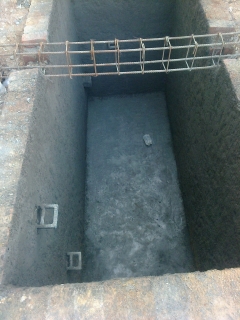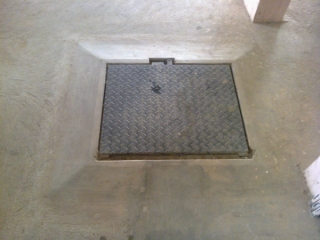Sump:
Sump will be the one which will be constructed first. By the time you construct sump, you should have and idea how may houses you are going to construct in site
sump size should be directly proportional to the number of houses you are constructing in site and water availability
If there is only one house then 6000 liters to 8000 liters sump is sufficient.
if you are constructing rented houses then maintain more storage space for sump (~12000 ltrs of water).
Having bigger tank is useful when there is a water scarecity.
Sump Photos:
If you observe below photo for the walls rough plastering was done.
This rough plastering was done after metal mesh was tied to the wall.
Download this photo and look at the wall edges you can observe iron mesh.
After plastering:
Now a days few persons are using steps (see below picture) instead of rock. I am not sure of the disadvantage of this.
Please share your ideas to my mail id. i will include them in this website. So that it will be useful for others
- To find out your sump capacity first you need to have length, width and depth of your sump/tank in feet
- Multiply length, width and depth of your sump to find out cubic area of your tank/sump.
- 1 feet cube area(1′ length * 1′ width * 1′ height) will store upto 28 ltrs of water.
- So multiply your sump cubic area with 28 and you will get your sump/tank water storage capacity in liters
- Above formula will work only if your tank shape is in rectangle or square.
- If at all there are different shapes then find out total area in cubic feet and multiply with 28 which will result number of liters
- Water pressure will be more on the edges of the tank. So avoid constructing sump/tank corners with 90 degrees like room walls.
- When you are constructing sump, have edges in a curved shape. so that water pressure will be diverted to a larger area. This will have some significant effect in the long run.
- While constructing sump, Manson will use iron mesh during plastering to avoid cracks.
- Sump and tank plastering should be completed at one stretch to avoid cracks.
- Do not use low quality brick for sumps and tanks.
- Keep sump door always towards street side. so that tankers can pour water easily
- Keep 3″ pipe connection to the sump from outside. So that water tankers can directly pour water from outside
Preferred one: <attach a photo>
Not Preferred one: <attach photo>
Not Preferred one: <attach photo>






